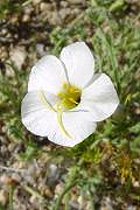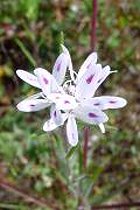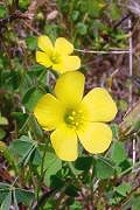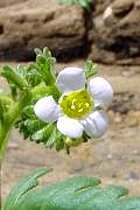- Ya'bea: named for Yoshisada (Yoshitaba) Yabe (1876-1931), a Japanese
botanist born in Tokyo and educated at the University of Tokyo. He was an assistant in botany in the College of Science, Imperial University, Tokyo, beginning in 1900 and was an assistant professor at the same institution from 1904 to 1909. The genus Yabea was published by Boris Mikhailovic Koso-Poljansky in 1915.
- yadon'ii: named for Vernal Lee Yadon (1931- ), a former director of the
Museum of Natural History in Pacific Grove, Monterey County.
- yeo'i: named for Peter Frederick Yeo (1929-2010), a British botanist, taxonomist, and author of Hardy Geraniums.
 |
|
(1985). He was born in Kingston-on-Thames. He attended Clayesmore School and then went up to Queen’s College, Cambridge, going on to graduate studies at Leicester and working on the British species of Euphrasia. In 1953, he was appointed taxonomist, research assistant and librarian at Cambridge University Botanic Garden, a post he held until his retirement in 1993. Yeo specialized in the taxonomy of crops; he devoted himself intensively to the genus of the stork's beak (Geran- ium). He also contributed to Flora Europaea, Volumes 1-5, and was co-editor of the European |
Garden Flora. During Dr. Yeo’s 40 years at the garden he also taught at the Botany School at Cambridge University. During his extensive career he co-authored many books as well as articles on a wide range of topics, including botany and natural history. His painstaking work on the hardy Geranium species led to the Botanic Garden being awarded National Collection Scientific Status in 1999. His monograph on Hardy Geraniums, or cranesbills, was published in 1985 and remains a classic publication on cultivation of this extensive genus. In 1981, Peter Yeo and Clive J. King, librarian, published a Catalogue of Plants in the Cambridge University Botanic Garden. In 1973, he published The Pollination of Flowers in the New Naturalists series, together with Michael Proctor. Peter Yeo lectured and supervised students at the Cambridge University Botany School. Andrew Lack, botanist and lecturer, co-authored The Natural History of Pollination (1996) with Michael Proctor and Peter Yeo. Lack was supervised by Peter Yeo and gained his doctorate on the pollination of knapweeds. Yeo was an expert on insects and birds in addition to his knowledge of plants. He published a Naturalist Handbook on solitary wasps together with Sarah Corbet in 1985. He was a fellow of Wolfson College and a fellow of the Linnaean Society of London and the Botanical Society of Britain and Ireland. Toward the end of his life he developed Parkinson’s disease and died in 2010.
- yi'na: a Klamath Indian word for mountain (thanks to David Hollombe
for this obscure tidbit).
- yollabollien'sis: of or from the region of the Yolla Bolly Mts in
northern California.
- york'ii: named for Dana Adrian York (1962- ), a Park Service botanist of Death Valley National Park and leader of many botanical workshop/field trips for the Jepson Herbarium and the Siskiyou Field Institute. He was born in Berkeley, California, and was inspired by the outdoors from camping and fishing trips to the NF Yuba River with his father. He earned a BS degree in forest resource management from Humboldt State University in 1984 and an MS degree in biology with a botany emphasis from California State University, Fresno, in 1999. He has botanized most of California from the Sierra to the Oregon border. For the past 15 years he has been botanizing throughout the Klamath Mountains, and is currently a botany research associate with the California Academy of Sciences. From 1999 to 2004 he was the Park Service Botanist in Death Valley National Park. From 2004 to 2007 he was US Forest Service planning team botanist on the Umpqua National Forest on the western slopes of the Cascade Mountains. Beginning in 2007 he became Senior Environmental Planner and Branch Chief for the California Department of Transportation. He is a member of the California Native Plant Society, the California Botanical Society, and the Friends of the Jepson Herbarium, and is the author of Illustrated Flora of Sequoia and Kings Canyon National Park. CA (2018). He says that his interests/hobbies include backpacking, rock climbing, kayaking, bicycling, plant photography, and spending time with family.
- yosemita'na/yosemita'num/Yosemite'a: of or from the Yosemite area.
- yosemiten'se: same as previous entry.
- Young'ia: named for in the words of the author, "two famous Englishmen, one as a poet, the other as a physician,".
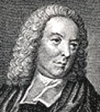 |
|
to wit, Edward Young (1683-1765) and Thomas Young (1773-1829). Edward Young was an English poet, literary critic, dramatist, philosopher and theologian. He was born at Upham, near Winchester, the son of a clergyman, and was educated at Winchester College and graduated from New College, Oxford in 1702. Subsequent to that, he removed to Corpus Christi College at Oxford. In 1708 he was nominated by Archbishop Tenison to a law fellowship at All Souls College which was a constituent college of the University of Oxford. He took a degree of bachelor of common law |
in 1714 and a doctor of canon law degree in 1719. He began publishing poems and frequenting literary circles around 1713. He included among his acquaintances such men as Jonathan Swift and Alexander Pope. His career was largely taken up with writing poems, the most famous of which was entitled “The Complaint, or Night Thoughts,” which was inspired by the successive deaths of his stepdaughter in 1736, her husband in 1740, and his wife in 1741. He also wrote plays and works of literary criticism, and he decided to take holy orders when he was in his fifties. His plays received little aclaim and were rarely performed. He spent much time in seeking patronage to support him, but his efforts were only partially successful. He was offered but for some reason refused a life annuity by the Marquess of Exeter if he would act as tutor to his son. In 1731, after being given a substantial college living situation by All Souls, he met and married Lady Elisabeth Lee. His poems continued to be popular throughout the century. He died at his rectory at Welwyn in 1765 and was buried there in the parish church. Thomas Young was a British polymath and
 |
|
physician who made notable scientific contributions to the fields of vision, light, solid mechanics, energy, physiology, language, musical harmony, and Egyptology. He was born into a Quaker family in Milverton, Somerset. He had an astounding facility for languages and by the age of fourteen had learned Greek and Latin and was acquainted with French, Italian, Hebrew, German, Aramaic, Syriac, Samaritan, Arabic, Persian, Turkish and Amharic. Wikipedia relates that: “[He] began to study medicine in London at St. Bartholomew's Hospital in 1792, moved to the University of |
Edinburgh Medical School in 1794, and a year later went to Göttingen, Lower Saxony, Germany, where he obtained the degree of doctor of medicine in 1796 from the University of Göttingen. In 1797 he entered Emmanuel College, Cambridge. In the same year he inherited the estate of his grand-uncle, Richard Brocklesby, which made him financially independent, and in 1799 he established himself as a physician at 48 Welbeck Street, London. Young published many of his first academic articles anonymously to protect his reputation as a physician. In 1801, Young was appointed professor of natural philosophy (mainly physics) at the Royal Institution. In two years, he delivered 91 lectures. In 1802, he was appointed foreign secretary of the Royal Society, of which he had been elected a fellow in 1794. He resigned his professorship in 1803, fearing that its duties would interfere with his medical practice. His lectures were published in 1807 in the Course of Lectures on Natural Philosophy and contain a number of anticipations of later theories. In 1811, Young became physician to St George's Hospital, and in 1814 he served on a committee appointed to consider the dangers involved in the general introduction of gas for lighting into London. In 1816 he was secretary of a commission charged with ascertaining the precise length of the second's or seconds pendulum (the length of a pendulum whose period is exactly 2 seconds), and in 1818 he became secretary to the Board of Longitude and superintendent of the HM Nautical Almanac Office. Young was elected a foreign honorary member of the American Academy of Arts and Sciences in 1822. A few years before his death he became interested in life insurance, and in 1827 he was chosen one of the eight foreign associates of the French Academy of Sciences. In 1828, he was elected a foreign member of the Royal Swedish Academy of Sciences." He made significant contributions to the translation of the Rosetta Stone, was credited with establishing the wave theory of light, influenced in his experiments by those of Isaac Newton, and was praised by such giants as Sir John Herschel and Albert Einstein. Young has been described as "The Last Man Who Knew Everything." He died in London at the early age of 56. The genus Youngia was published by Alexandre Henri Gabriel de Cassini in 1831.
- Yuc'ca: from the Carib name for manihot or cassava
(a genus belonging to the Euphorbia and misapplied to these
liliaceous evergreen shrubs or small trees with rosettes of sword-shaped
leaves). Wikipedia adds: "Early reports of the species were confused with the cassava (Manihot esculenta). Consequently, Linnaeus mistakenly derived the generic name from the Taíno word for the latter, yuca. The Aztecs living in Mexico since before the Spanish arrival, in Nahuatl call the local yucca species (Yucca gigantea) iczotl, which gave the Spanish izote. Izote is also used for Yucca filifera." The genus Yucca was published by Carl Linnaeus in 1753.
- yu'mae: of or from Yuma, Arizona.
|
